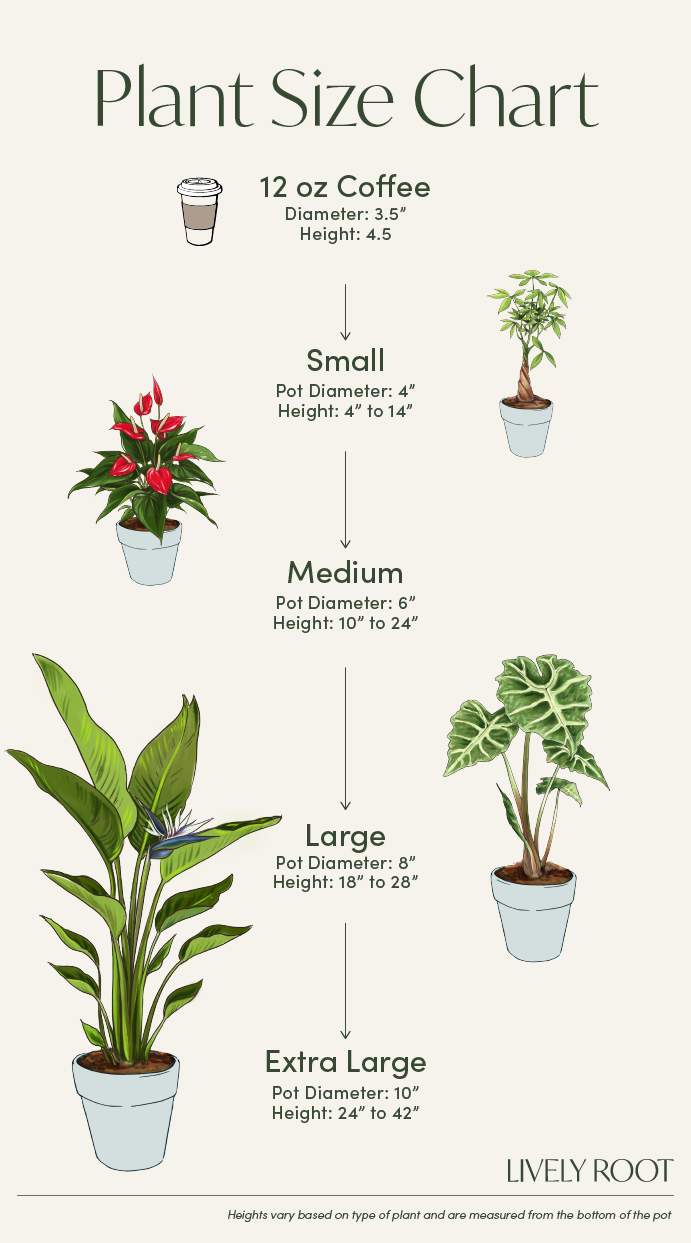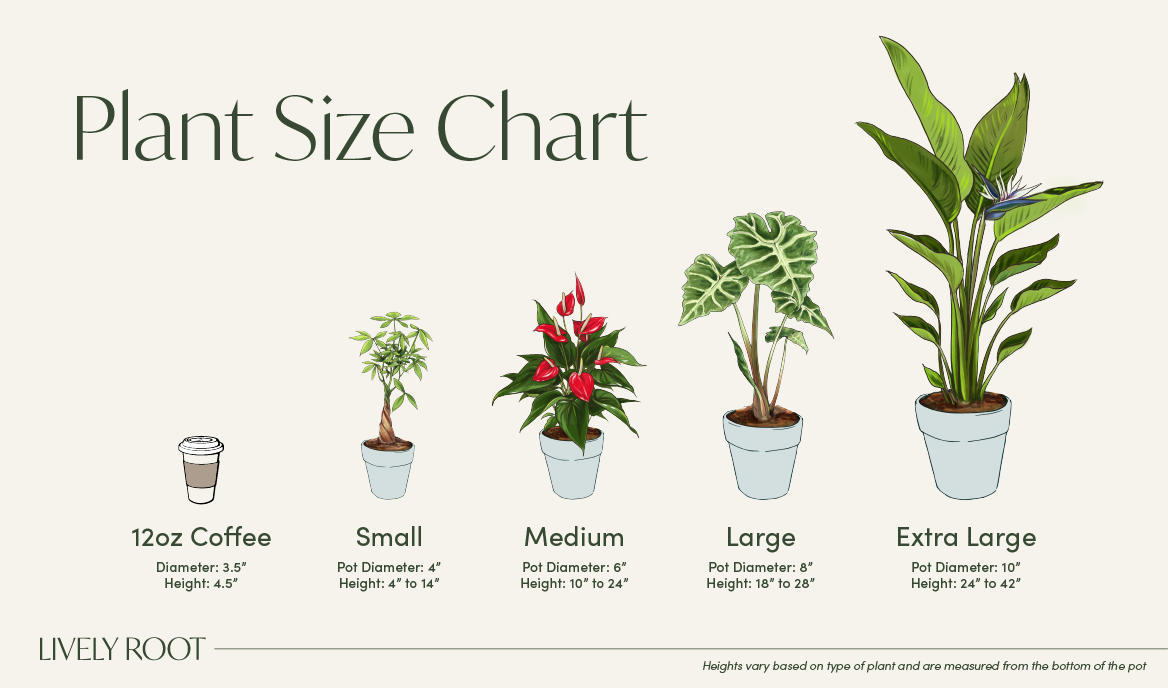

The Pink Princess Philodendron (Philodendron erubescens) is a heart-shaped leaf beauty that's a rare sight for plant lovers. She'll activate your endorphins and be the center of attention with her variegation of pink and green to balance the colorful leaves. Philodendron Pink Princess prefers to wear her high heels and grow taller by the year. This princess is highly coveted, rare, and in low supply, and she is bejeweled. (Growth can be up to 4 feet tall and 18 in. wide.)
Pink Princess Philodendron Care & Buying Guide

Keep your plant in bright, indirect light to increase the variegation. Direct sunlight for a couple of hours a day in an eastern-facing window will also help it to maintain its pink leaves.
Allow the top half of the soil to dry out between waterings. Use filtered, bottled, or tap water sitting 24 hours to release the chemicals and water enough that the water discharges out of the drainage holes. This plant does not like to sit in water. Once the water is fully drained, replace it into the cache or decorative pot.
Average humidity levels at least 40% is adequate for this plant's needs. If her leaf edges are turning brown, increase the humidity around this plant or add a humidifier closeby.
Keep this plant out of cold drafts near open windows or doors.
This plant will not tolerate frost or temperatures below 60°F if left outside.
Apply a liquid fertilizer especially formulated for indoor plants. Water the soil before application each time. Apply during the spring, summer and fall season. Let it rest during the winter.
When receiving the Philodendron plant, do not repot immediately but wait at least 6-12 months. Repot in the spring, using a 2" bigger pot. (Too big of a pot could cause the soil to dry slower, which can cause blackening leaves.)
Place a piece of screening at the bottom of the container over the drainage hole to secure the soil and allow it to drain. Use a well draining potting mix with one part perlite and one part orchid bark.
Lift the plant and release the roots against the existing planter. Use a clean knife or garden trowel to wedge between the pot and the soil to loosen.
Inspect the roots. Notice if there are any dead or rotting roots and trim off with sterile pruners.
Ensure the plant is sitting about 1 inch below the edge of the pot to avoid water spillage. Add more soil and backfill around the sides by tamping down. Fill up to the soil line but not over.
Water thoroughly, leaving the soil damp but not soggy. If settling occurs, add more soil.
Water well to dampen the soil and let it drain.
To clean the leaves and alleviate dust particles, give it a shower from above. Fill a watering can with filtered, distilled or tap water that has been sitting for 24 hours. Place the plant in a sink and lightly wash the leaves with a shower spray end watering can. Trim off any brown or yellowing leaves with sterile scissors. Remove any debris from the soil and replenish soil if needed. Inspect for any insects at this time.
Stem Cutting:
In early spring, take a philodendron cutting, use sharp pruners to remove a cutting from a tip off the vine. Cut at least 5-6 inches of stem to propagate with aerial root or nodes attached.
Place in a vase with water to root. Change the water each week with filtered, bottled, or tap water sitting at least 24 hours.
After 3-4 weeks, check to make sure the stem has 1-2 inch, well-formed roots. If so, it's time to plant.
*Fill a small container with drainage holes (too large of a container for the cutting will make it challenging to regulate watering needs) using an indoor well-draining potting mix.
Mix a little rooting hormone into the soil. Poke a hole in the soil with a pencil. Then, place the cutting in the hole and tamp the soil down around it.
Water the plant and keep it in medium to bright indirect sunlight. After 4-6 weeks, the roots should establish.
Division:
Divide the philodendron in the early spring when emerging from dormancy.
Pull from the container and cut through the roots with a sharp knife or pruners.
Repot in a rich, indoor potting soil mix.
Use a container 2 inches bigger than the root ball with drainage and is deep enough for the roots to grow. Place the roots at the same level as the previous pot adding soil at the bottom if necessary.
Set it in bright, indirect sunlight and water.
Check the moisture and humidity each day and add misting to keep the soil moist while the roots establish.
After 6-8 weeks, roots will begin to form.
Pink Princess Philodendron: Overview
The Philodendron Pink Princess (Philodendron erubescens 'Pink Princess') is a rare, variegated Philodendron hybrid with purplish stems and glossy, heart-shaped leaves speckled with bright pink. Also known as the blushing Philodendron or the PPP plant, the Pink Princess Philodendron is a self-heading climbing plant that can grow to 4 ft. in height.
The Philodendron Pink Princess plant belongs to the Araceae family, which includes other popular houseplants like the Flamingo Flower. It can grow outdoors as a patio plant in hardiness zones 9 to 11, but remember to bring it indoors in cold weather because this tropical plant loves warm temperatures.
This colorful indoor plant needs plenty of sunlight to keep its variegated leaves looking their brightest and best. In addition, this easy-going plant may be more suitable for plant lovers without pets, as it is toxic to pets if ingested.
Because of its pink-splashed heart-shaped leaves, the Pink Princess has come to symbolize enduring love and affection. That’s why it’s a popular gift for loved ones on various occasions, from weddings to birthdays.
Philodendron plants are versatile, ranging from attractive vines, like the Philodendron Lemon Lime to the cute and compact Philodendron Birkin.
Philodendron Erubescens: Benefits
- An excellent air-purifying plant that cleanses indoor air from toxins
- Boasts colorful and unusual foliage
- It’s easy to care for
- Rare and stylish focal point plant
- Good for sunlit bedrooms and offices
Philodendron Pink Princess: Care Guide
Like other plants, the Pink Princess Philodendron requires proper care to thrive. Follow the tips below to ensure your Pink Philodendron gets what it needs.
Watering and Humidity
Philodendrons can be sensitive to chemicals contained in tap water. Let the water sit for 24 hours before watering to let the chlorine and other chemicals evaporate or use filtered water. Water your plant when the top of the soil is dry. The Pink Philodendron plant requires high humidity levels to thrive, ideally from 50% to 60%. Group it with other plants, put it on a pebble tray, or mist daily to increase humidity.
Light and Temperature
The Philodendron Erubescens Pink Princess needs several hours of full sun to maintain its variegated colors. Make sure you place it near a window or in a bright room, which gets plenty of light. The Pink Princess Philodendron loves warm temperatures, ranging from 65℉ to 80℉. If grown outdoors, always bring the plant inside if the temperatures fall below 60°F.
Soil, Feeding, and Repotting
The best soil for your Philo Pink Princess plant should be well-draining to prevent root rot. Try mixing the potting soil with perlite and orchid bark for better drainage. Repot in springtime into a 2-inch larger pot. Water well after replanting and let the water drain thoroughly. The Pink Philodendron will benefit from feeding with a liquid fertilizer diluted at half-strength during the growing season.
Propagation
You can propagate a large Pink Princess Philodendron plant via cuttings in the spring. Take several 5-inch cuttings and place them in a transparent glass of filtered water or plant directly into the soil. You can also propagate a large Pink Philodendron by division during repotting.
Pruning, Cleaning, and Common Issues
Trim any browning or wilting leaves and prune for more compact growth if necessary. Shower your Philodendron Pink Princess to remove dust from its leaves. Since the Pink Princess Philo is a natural climber that can grow into a large plant when mature, you can provide some extra support for your plant by getting it a moss pole to cling to.
Common issues to watch out for are browning leaf tips, due to low humidity and yellowing, mushy leaves that indicate overwatering.
Pink Princess Philodendron: Placement, Companion & Alternative Plants
The stunning colors of the Pink Princess Philodendron’s leaves make it an eye-catching and highly decorative houseplant that can beautify your home.
Best Locations & Uses
- Wonderful air-cleansing plant for bedrooms
- Great gift with a romantic message
- Perfect for plant lovers with no pets
- Ideal plant for novice gardeners because of its easy-care needs
- Excellent mood-lifting desktop plant for a brightly lit office
Companion Plants
Philodendron plants look amazing when grouped in complementary colors, as we’ve done in the Royal Sisters bundle. You can also combine your Philo Pink Princess with other sun-loving plants:
- Hawaiian Ti Plant (Cordyine terminalis or fC. ruticosa "Hot Pepper’): Adaptable and easy to care for, the gorgeous Hawaiian Ti Plant has dark green leaves that turn red with pink edges and is also known as the Good Luck Plant.
- Peace Lily Plant (Spathiphyllum): The Peace Lily has distinctive white flowers and broad, elegant green leaves, and it’s considered one of the best air-purifying plants.
- Petra Croton (Codiaeum variegatum 'Petra'): A sun-loving plant with colorful variegated leaves, the Petra Croton will add a fun and adventurous note to your living space.
Alternative Plants
If you’re a pet owner, you may want to get a pet-friendly plant that will be safe for your cat or dog. Here are several ideas:
- Pink Polka Dot Plant (Hypoestes phyllostachya): If you like pink plants, look no further than the fun and colorful Pink Polka Dot Plant.
- Peacock Plant (Calathea roseopicta): With its unusual pattern and bright leaf colors, the pet-safe Peacock Plant is a gorgeous addition to your plant collection.
- Cat Palm (Chamaedorea cataractarum): One of the most popular indoor palms, the Cat Palm has elegant, curved fronds growing from the base of the plant.
Get a Pink Princess Philodendron for Sale from Lively Root Now
Style your home with the rare and colorful Pink Princess Philodendron for sale from Lively Root!
















































